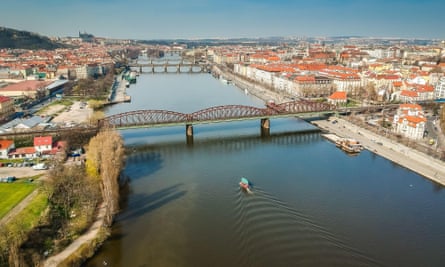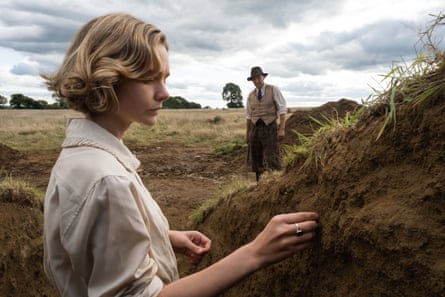[ad_1]
Aleksandar Hemon, 58, was born in Sarajevo and lives in New Jersey. His diverse output includes The Lazarus Project (2008), a novel drawing on the 1908 shooting of a Jewish migrant by Chicago police; the autobiographical essay collection The Book of My Lives (2013), which discusses the death of Hemon’s second child; and the screenplay for The Matrix Resurrections, co-written with Lana Wachowski and David Mitchell. His new book, The World and All That It Holds, is a century-spanning, cross-continental polyglot gay romance between two conscripts, one Jewish, one Muslim, who fall in love fighting the first world war in central Europe. Hemon spoke from his office at Princeton University, where he has been teaching creative writing since 2018.
Where did The World and All That It Holds begin?
I signed a contract for the book in 2010 and cleared my schedule that fall to work on it, and then my daughter got ill and died that year. I’ve since written four other books and many other things while working on it on and off because I have this ability – more like a deformation – to work on about seven things at the same time; I react to stress with hypermania and feel a compulsion to make stuff. I like history books about wars and spies and was reading the memoirs of a British spy, Frederick Bailey, who in 1918 was in Tashkent [in Uzbekistan, then under Russian rule]. The Bolsheviks are looking for him when he runs into a Sarajevan guy from the secret police, who says: “Let’s work together. I want to get out of here too, back to Sarajevo.” This guy devises an exit for them by hiring Bailey to hunt for himself; I liked that! My boys, Pinto and Osman, have a different setup, but that’s what started me thinking.
Did it feel risky incorporating so many languages into the narration?
The book is 102,000 words and I venture that under 1,000 of them are foreign words, but already [among early readers] it has started to come up: “There are a lot of foreign words.” I was aware of the risks, yet I wanted an actively multilingual consciousness at the centre of the novel. Pinto’s native languages are Bosnian and Ladino, or Spanjol as it was called in Sarajevo – the Castilian Spanish as spoken by Sephardic Jews after they were expelled [from Spain in 1492]. German features too because Sarajevo was under Austrian occupation and Pinto studied in Vienna. And there’s a residual presence of Turkish because his father was a subject of the Ottoman empire. To me, this is life; not just my life, but that of a lot of people I know.
How did you settle on the book’s tone, between horror and hope?
What I was thinking about was: under what condition is our presence in the world not only about suffering? What conditions have to be met for people to be able to love other people? There is a threshold: I don’t think there were many love affairs in Auschwitz. If you’re stuck in one place, all the hope you might have is in that place, so when there’s no hope, there’s no hope. But I write about displacement and migration, and the narrative of moving from “here” to “there” is inherently hopeful; people want to go toward wherever they can make decisions about their life. If you’re in a war and people are trying to kill you, all you can do is stay alive, but over “there”, there could be schools or jobs or just, you know, the possibility of dignity.
Why did you put a version of yourself into the epilogue, set in 2001?
My books are not a report. All fiction is “what if?” and I have to put myself in the position of the person who is doing the what-iffing; if I took myself out, it would be a proper historical novel with the implied expertise of a writer speaking from a position of authority.
Tell us about your work as a screenwriter.
The sovereignty of being in my head as a novelist is enjoyable but gets burdensome. Lana and David are good friends with brilliant minds different from mine and there’s relief in that: whenever I watch The Matrix Resurrections, at no point do I think: “That’s mine, I did this,” because I never did it alone. So what I get out of screenwriting – apart from the money, which is nice – is doing something with others. The traditional bourgeois concept of literature is that it’s a way to be alone; there’s a Jonathan Franzen book of essays called How to Be Alone. But I don’t want to be alone. I want to be with people.
You’re a Liverpool fan. How come?
There was not much football here when I ended up in the United States in the early 90s [during the Bosnian war]. All kinds of nostalgia kicked in for things I couldn’t do any more. Football was one, and Liverpool had been crucial in how I got to love it; they reigned in Europe when we were kids playing in parking lots in the 70s, imagining that we might be Kevin Keegan. When I did an interview for my first book, the photographer took my picture in a Steve McManaman shirt. Someone working for the Liverpool matchday magazine contacted me afterwards and I wrote a couple of columns for it and went to Anfield for the first time. Once I went to Anfield, we were married for life; what Jerusalem is for religious people, Anfield is to me. As for the team now, it’s a crisis but it’ll be OK. I’ve gone through the Roy Hodgson phase, so this is nothing.
Which writers inspired you growing up?
In elementary school I got into the surrealist Yugoslav poet Vasko Popa. I didn’t understand him but he had this sheer force of language… Perhaps that is why I am comfortable with complexity. I don’t have to understand everything in a book. It’s not like a car – not everything has to work. If you are constantly puzzled by the world then you read books that puzzle you. I still don’t understand everything in Kafka. His transformation of experience never exactly matches our own experience but at the same time seems to be pointing at some essential quality of it; that’s the shit I like.
[ad_2]
#Aleksandar #Hemon #book #isnt #car #work
( With inputs from : www.theguardian.com )













